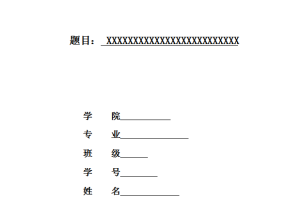摘要
在现代教学中,少儿音乐教师的教学一味寻求教学过程少儿发展更快,忽视了教育的本质是育人,教学的主观目的是为了让少儿激发求知欲和学习能力。在目前的小学音乐教学过程中,少儿音乐教师缺乏对少儿的热爱音乐兴趣的培养,导致少儿对音乐艺术一知半解。在新课程标准这个概念处于十分突出的位置,以“培养对音乐的兴趣,终身学习的愿望”为少儿的音乐学习提供良好的情感基础,以及提高其对音乐的感兴趣程度,因少儿对音乐学习的兴趣度和求知欲会影其表现和发展,态度和价值观。
关键词 中小城市;少儿教学;小提琴教学;课程设计
Abstract
In modern teaching, music teacher teaching blind children teaching children to seek faster development, ignoring the essence of education is educating people, teaching subjective purpose is to allow children to stimulate curiosity and learning ability. In the current process of teaching elementary school music, children’s music teachers lack the training of children’s love interest in the music, the art of music led to a smattering of children. In the concept of the new curriculum standards in a very prominent position, to “cultivate interest in music, the desire for lifelong learning” provides a good foundation for children’s emotional music learning, and improve their level of interest in music, because children’s music the degree of interest in learning and thirst for knowledge will shadow its performance and development, attitudes and values.
Keywords medium and small cities; children’s education; violin teaching; curriculum design
目 录
摘要……………………………………………………………………………………………………………………… I
Abstract……………………………………………………………………………………………………………….. II
绪论……………………………………………………………………………………………………………………… 1
一、少儿音乐学习概述…………………………………………………………………………………………. 1
(一)少儿学习特点…………………………………………………………………………………………….. 1
(二)少儿音乐学习国内外研究…………………………………………………………………………… 1
1.国内对小少儿学习音乐的研究…………………………………………………………………….. 1
2.国外对小少儿学习音乐的研究…………………………………………………………………….. 2
二、中小城市少儿音乐教学中的问题……………………………………………………………………. 2
(一)认知能力低………………………………………………………………………………………………… 2
(二)教学方式过于传统……………………………………………………………………………………… 2
(三)学习兴趣度低…………………………………………………………………………………………….. 2
(四)教学机制不完善…………………………………………………………………………………………. 3
(五)少儿音乐教师教学重法轻用……………………………………………………………………….. 3
三、中小城市少儿小提琴教学课程设计………………………………………………………………… 3
(一)课程设计目的…………………………………………………………………………………………….. 3
(二)实施过程……………………………………………………………………………………………………. 3
(三)设计分析……………………………………………………………………………………………………. 3
(四)设计总结……………………………………………………………………………………………………. 3
四、提升少儿小提琴教学的建议…………………………………………………………………………… 3
(一)运用行之有效的训练方法…………………………………………………………………………… 3
(二)积提升少儿音乐教师素养和技术水平…………………………………………………………. 4
(三)优化课程资源…………………………………………………………………………………………….. 4
(四)激发少儿学习的兴趣度………………………………………………………………………………. 5
(五)发挥少儿音乐教师引导的作用……………………………………………………………………. 5
结论……………………………………………………………………………………………………………………… 7
参考文献………………………………………………………………………………………………………………. 8
致谢……………………………………………………………………………………………………………………… 9





